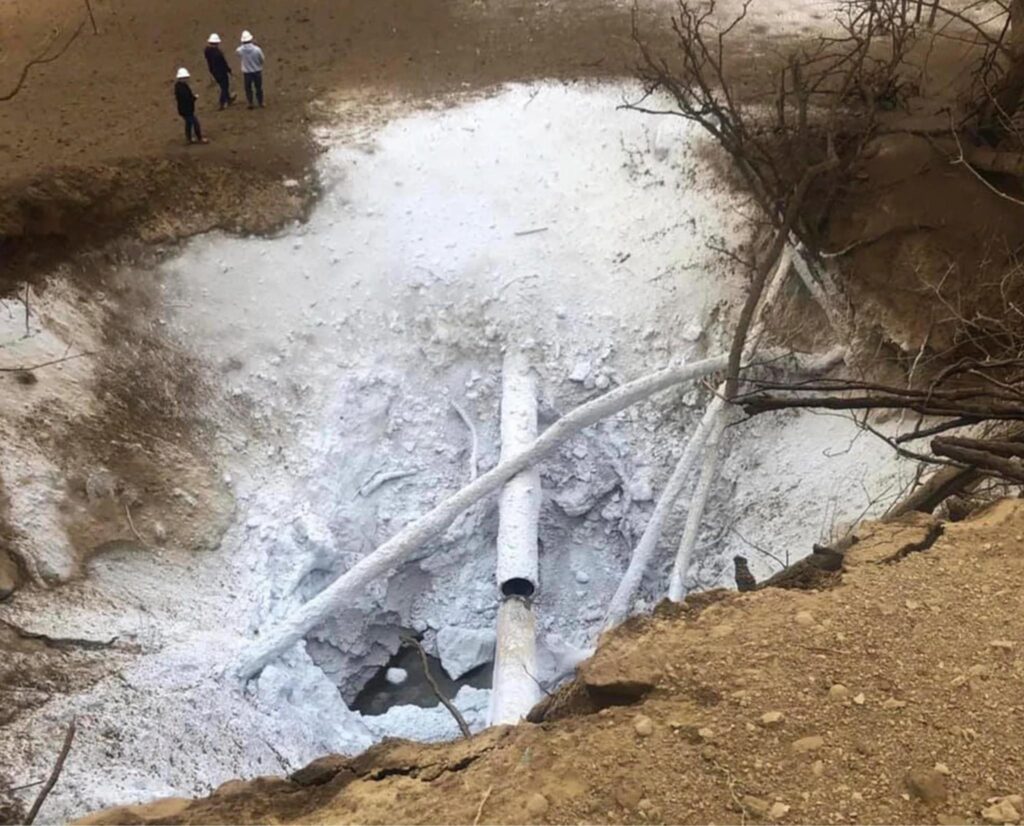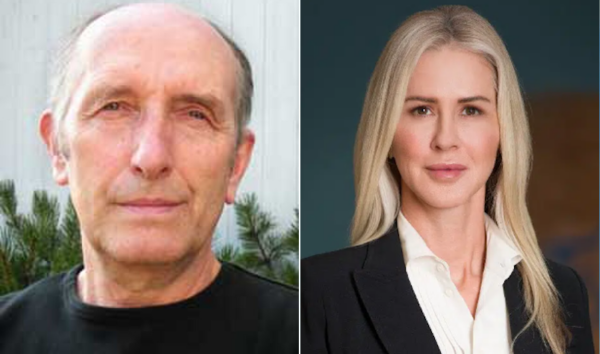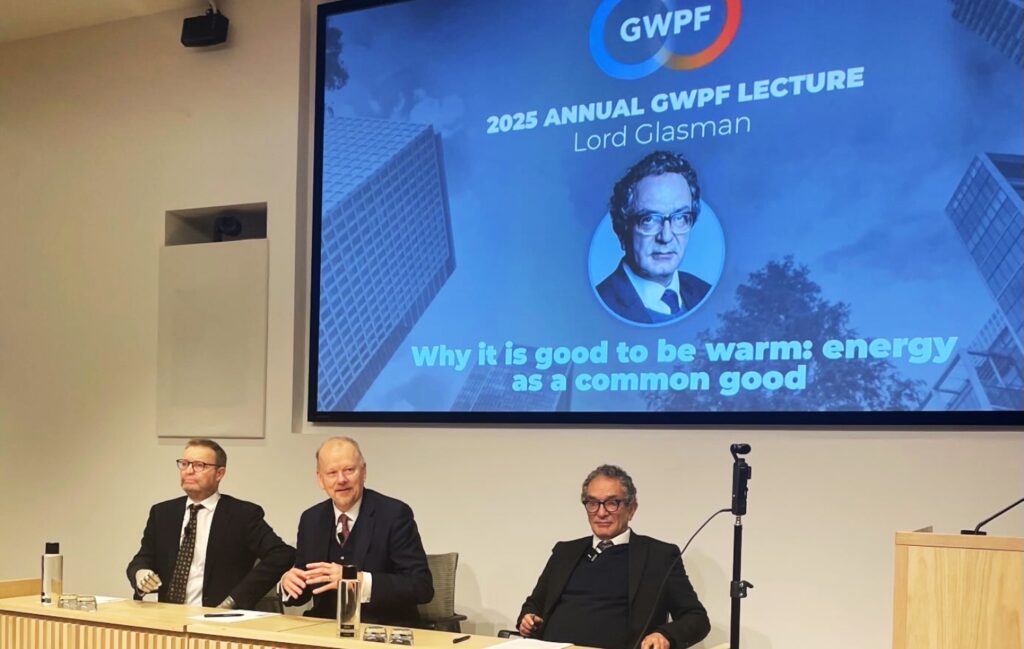A well-known Canadian professor who doesn’t believe in global cooperation to prevent climate change described carbon capture and storage (CCS) as “stupid” in a recent discussion hosted by Resource Works, a Canadian natural resource development lobby group.
Vaclav Smil, professor emeritus in the Faculty of the Environment at the University of Manitoba, laughed when the discussion moved to carbon capture, saying, “This always comes up. This always comes up — nuclear fusion and carbon capture,” which he then described as “sheer desperation.”
“People realize that it would be impossible to produce zero carbon by 2050,” Smil continued, “So they say, ‘ah, but we’ll capture it, and we’ll hide it!’”
This drew a laugh from the audience.
“Now I capture it, and bury it somewhere. It’s stupid, right? From the smart engineering viewpoint it’s the stupidest solution.”
Moderator Susannah Pierce, president and country chair of Shell Canada, reacted to Smil’s position, which couldn’t be more at odds with those proposed by Big Oil and their lobbyists.
“Well as a company that’s actually captured about eight million tons in the last eight years for a project in Alberta I don’t think [carbon capture] is completely off base,” she said, defending her company’s CCS efforts. “However, I don’t disagree with you in terms of the scale of the challenge of what’s been proposed,” she added.
DeSmog reached out to Shell Canada to see if they could clarify Pierce’s remarks. In an emailed statement, Shell Canada’s head of media and corporate relations Stephen Doolan said: “The project Ms. Pierce is speaking about is Quest – which has in fact safely captured and stored over eight million tonnes of CO2 since 2015. The scale of the challenge is the number of CCS projects required and the urgency to get them up and running for Canada to realize its net-zero goals.”
A 2022 study of the Quest plant commissioned by Global Witness indicated that the facility actually emitted more carbon dioxide than it captured.
Canada’s oil majors have been confidently preaching the gospel of CCS in their efforts to secure public licenses — and substantial government subsidies. The Quest project has received over $650 million USD in public subsidies from the governments of Alberta and Canada, more than 65 percent of the facility’s total cost. Despite being touted as a “thriving example” of oil industry success in reducing emissions, Quest has effectively only captured less than 50 percent of emissions, far below its 90 percent target. This capture rate drops below 40 percent when considering the other greenhouse gasses the facility emits.
Smil was the featured speaker of the special dinner organized by Resource Works, held at the Fairmont Vancouver on September 25.
In press releases for the event, Smil was described as an energy expert who would share his views on a wide variety of issues in a 30-minute talk followed by a Q&A. Smil’s professional speaker biography describes him as “among the most important thought leaders of our time.” Among other accolades, Bill Gates has said he’s one of Smil’s “biggest fans,” while also noting that he and the academic have different views when it comes to energy.
Karl Burkart, deputy director of One Earth, has described Smil as the “high priest of naysaying.” He has a long and detailed history with the libertarian American Enterprise Institute, which has received millions of dollars from ExxonMobil. Much of Smil’s criticism focuses on possible climate change mitigation strategies and solutions, of which he is nearly uniformly dismissive.
The event was titled “A Reasoned Path” and indicated Smil would talk about “the need for a clear-eyed, realistic approach to balancing the economy and the environment while meeting humanity’s material needs on a finite planet.”
According to a post on LinkedIn by Resource Works Director Stewart Muir, 300 people attended the event. DeSmog noted former British Columbia premiers Christy Clark, Gordon Campbell, and Glen Clark among those attending.
An independent analysis by DeSmog determined that, of a dozen major carbon capture and storage projects worldwide, all have been consistently over budget, have missed their capture targets, and have increased net emissions. An independent analysis of oil industry internal communications reveals why: Irrespective of the spin, carbon capture is not actually about reducing the amount of carbon in the atmosphere, as it is about securing government subsidies to assist industry-led efforts to lower carbon emissions related to increased oil production. Many critics have found these efforts to be largely ineffective.
Smil, who has positioned himself as a climate realist in relation to decarbonization and energy transition efforts, argued carbon capture is itself unrealistic because of the “big numbers” involved. To capture and sequester even a third of global CO2 emissions, Smil argued, the CCS industry would need to grow to the size of the current oil and gas industry within two or three decades. He noted that while the oil and gas industry has been in constant development and growth since the 1860s, creating a comparably sized CCS industrial infrastructure would need to be accomplished by 2050 to align with efforts to reach net zero emissions.
“Snowball’s chance in hell that it’ll happen,” said Smil.
This wasn’t Smil’s only area of concern. He also identified potential problems related to carbon dioxide leaks that could come with such a massive effort to sequester carbon emissions.
“It’s concentrated,” he stated. “Pressurizing it and forcing it down in the ground, and what? Making sure it will stay there,” he added, noting that just putting it in the ground would not be good enough because it would start leaking on the scale of “eight billion tons of carbon a year, year after year after year.”

Estimates suggest the amount of pipeline needed to adequately store captured CO2 would far exceed the existing oil and gas pipeline infrastructure of the United States—already at 2.6 million miles. A pipe rupture could spell death — carbon dioxide is an odorless and colorless asphyxiant that kills about 100 workers around the globe every year. In nearly all these cases, the quantity of CO2 was small and in confined spaces.
The best documented example of a large-scale carbon pipeline rupture occurred in Satartia, Mississippi, in February 2020, just weeks before the start of the global COVID-19 pandemic. Nearly 50 people were hospitalized and 300 evacuated after a 24-inch CO2 pipe burst and spewed carbon dioxide into the community for four hours.
Many of the victims still suffer from the adverse health effects of what became a mass poisoning. Additionally, there’s a general lack of training and awareness relating to CO2 poisoning, which caused even more harm in Satartia. The CO2 from the ruptured pipeline held close to the ground for an extended period of time, and was in such concentrated quantities, it displaced enough oxygen to stop the combustion engines of cars, trucks, and responding emergency vehicles in the area.
Victims poisoned by CO2 appeared to be frothing at the mouth, staggering around in a manner later described by first responders as looking “like you were going through the zombie apocalypse,” according to a recent NPR news report. Because CO2 is odorless, colorless, and tasteless, neither victims nor first responders had any idea what had happened for hours.
But the possibility of a single massive leak of concentrated CO2 from a single sequestration facility could cause even more damage. An example of how much destruction such could produce can be found in the details of the Lake Nyos disaster of 1986, in which an estimated 100,000 to 300,000 tonnes of CO2 was released from the bottom of Lake Nyos, Cameroon. The effect was the near instantaneous deaths of nearly 1,800 people, and nearly every other animal in a 25 kilometer radius of the lake.
Regardless of inherent dangers in CO2 capture and transmission, Smil focused his criticism of carbon capture primarily on economic matters. He argued CCS is ultimately difficult to justify when compared with renewable energy sources. In keeping with the event’s aim of a “clear eyed and realistic approach,” Smil compared Big Oil’s carbon capture goals with the space-faring ambitions of Elon Musk.
“So sequestration is pretty much like seeking Mars, right? Not right.”
Subscribe to our newsletter
Stay up to date with DeSmog news and alerts






